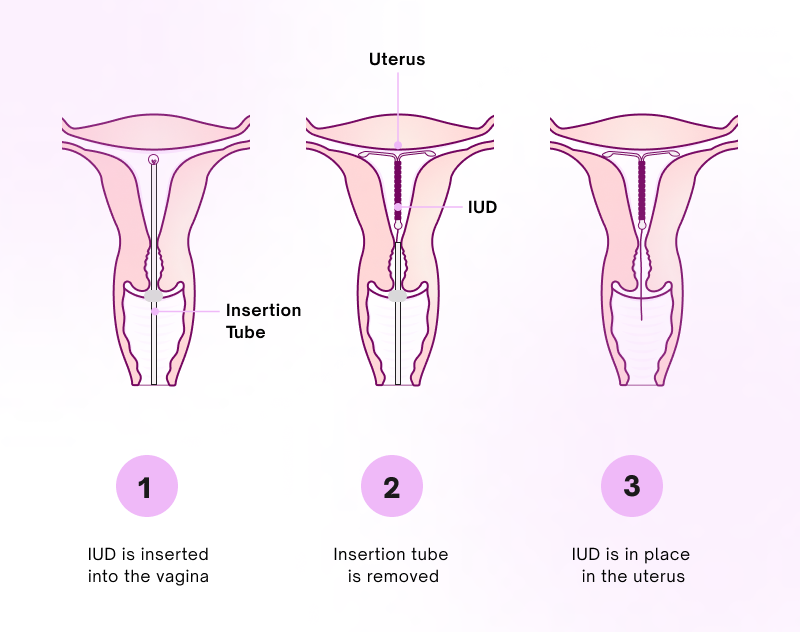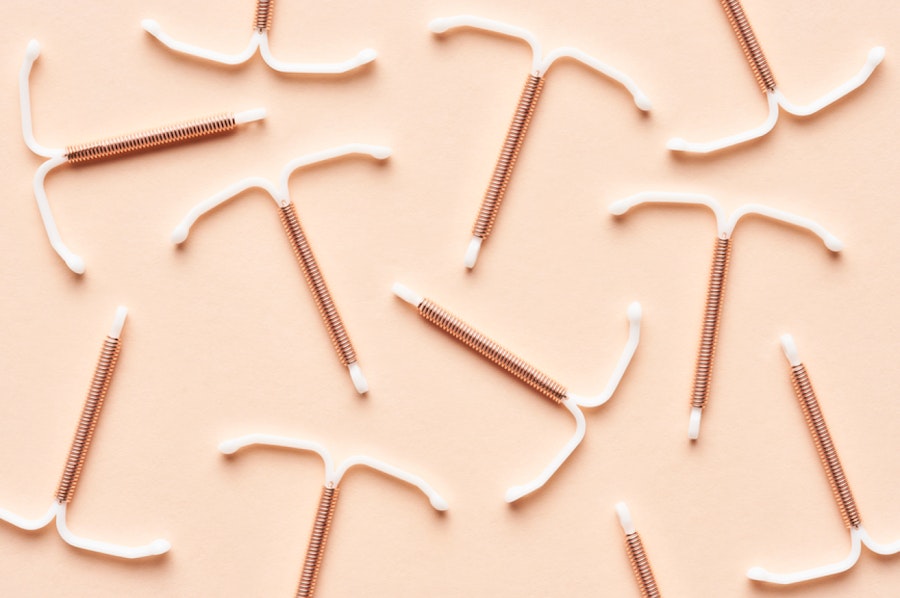What’s an IUD insertion like?
Key takeaways:
- Getting an IUD fitted is a quick procedure that’s carried out by a doctor or nurse
- You may experience some discomfort at the appointment and some cramping and spotting for a short while afterward
- Most people won’t experience any long-term side effects from the IUD, but a small number of people may experience symptoms such as heavier or more painful periods
What’s the IUD insertion process like?
We know you’re probably wondering, ‘Does getting an IUD hurt?’ While most people will experience some light pain or cramping during and after the appointment, this is short-lived.
While the process of getting an IUD fitted may vary slightly depending on where you live, it’s typically a quick procedure that’s carried out by a doctor or nurse. You should expect your appointment to take a maximum of 30 minutes, although fitting the IUD itself should only take about 5 minutes.
You don’t need to go to the hospital for this procedure. IUDs can usually be inserted at your local doctor’s office or a sexual health clinic. Here’s what to expect at your IUD insertion appointment:
- Step 1: Counseling - Before the IUD is inserted, you’ll have a quick conversation with your doctor or nurse about your medical history. You may also be offered to take a test for sexually transmitted infections at this point.
- Step 2: Pain relief - You may get offered pain relief at the appointment in the form of a numbing gel or injection. Some people choose to take pain relief medication like paracetamol before they go for their appointment.
- Step 3: Physical exam - It’s normal for the healthcare professional to check your vagina and cervix before the procedure starts. The doctor or nurse will leave the room while you get ready, you may be given a gown to wear. During the exam, you'll need to lie on your back. You may be asked to put your feet in stirrups to make you more comfortable so the doctor can easily carry out the procedure.
- Step 4: Fitting the IUD - A beak-shaped tool called a speculum is inserted into the vagina to help open the cervix for the IUD inserter. which is a thin tool that’s used to place the IUD through the opening of your cervix and into your uterus. This part might be a little uncomfortable, but only takes a few minutes.
- Step 5: Learn how to check your IUD - Your doctor or nurse will also show you how to check to see if your IUD is still in place. The chances of it moving or falling out are very small, but it’s important to know what to look for, as you won’t be protected from pregnancy if the IUD comes out or it’s not sitting in the right place.

What can I expect after an IUD insertion procedure?
While some people will feel completely fine after the appointment, it’s common to experience cramping and backache for a few hours after the IUD has been inserted. Since you don’t know how you will feel, resting or working from home is a good idea if possible. You can manage any pain with over-the-counter medication.
Some people may also experience light bleeding (known as spotting) for several months after getting the IUD fitted. This usually stabilizes within six months, and many people who get the hormonal IUD will have lighter periods (and in some cases no periods) after this adjustment period. However, the non-hormonal copper IUD can cause heavier bleeding and more painful cramping when you get your period.
How soon after getting an IUD can I have sex?
It’s safe to have sex straight away after getting the IUD fitted if you feel like it. However, depending on where you are in your menstrual cycle, and the type of IUD you’re using, you may need to use protection like condoms until the IUD can be relied on to work as birth control. Ask your healthcare professional for more info on when you’ll be protected by your specific type of IUD.
The copper IUD (Paragard) offers protection straight away and can also be used as emergency birth control if fitted within five days of unprotected sex.
Some brands of hormonal IUDs, such as Mirena and Lileta, can also be used as birth control as soon as they are fitted. You may need to wait up to a week before you can have unprotected sex if you’re using brands like Kyleena and Skyla. However, if these are fitted within the first seven days of your cycle, you can rely on them to prevent pregnancy straight away. This is because you’re very unlikely to be fertile on your period and in the first days of the cycle.
What to do if your IUD causes pain
You should expect a small amount of cramping and pain during the procedure, and for a short while afterward. However, if the pain is severe or continues for days after the procedure, you should contact your doctor immediately.
Birth control can cause side effects such as breast tenderness, changes to sex drive, headaches, and mood swings. While many side effects of the IUD may change or lessen over time, some people may experience ongoing symptoms for the duration of the time using this method. IUDs offer protection against pregnancy for several years before they need to be removed. However, you can get them removed earlier if you are not satisfied with the IUD as a birth control method.
You may also want to get your IUD removed early if you plan to start a family soon. It's possible to get pregnant after getting an IUD removed, but for some people, it can take a bit more time.
Choosing a birth control method that’s right for you
At Natural Cycles, we’re passionate about contraceptive choice. We believe every woman should feel empowered to take charge of her health. The first FDA Cleared birth control app, Natural Cycles is a non-hormonal, non-invasive birth control method that’s free from side effects. Founded in Sweden in 2013, today Natural Cycles has more than 3 million registered users worldwide. Why not find out if it could work for you?
Did you enjoy reading this article?
